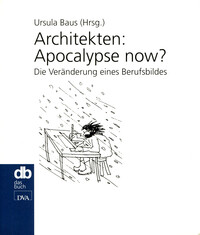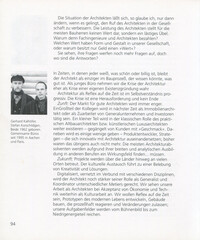

Apocalypse now?: The change of a job description
I believe that the situation of architects can only be changed if the architect’s reputation in society can be improved. For most builders, the architect’s performance is of no value, but rather an annoying evil. Why do specialist engineers and architects pay? What is the value of form and shape in our society, or why does only money have a “value”? You see, your questions raise even more questions, but where are the answers?
In times when everyone knows what is already or what is cheap, the architect remains the only one in the building process who could know what is good. As a young office, we perceive the crisis in architecture more as a crisis in starting our own business. Architecture as a reflex to time is progressive in its self-image. The crisis is a challenge and there is no end to it: The market for good architects is getting narrower. Most of the colleagues will soon be working as real estate architects or as assistants for general contractors and investors. A small part will continue to exist in the classic role of the practical architect of old buildings or artistic luxury architect - pushed by customers with “taste”. There will also be a few - product developers, strategists - who deal innovatively with architecture; By the way, they haven’t been up to now either. Most architecture graduates will have to find a field of activity in other professions because of their broad and analytical training. Future: Projects are supervised in many places across the countries. The cultural exchange leads to a stimulation of creativity and solutions.
Digitized, networked in conjunction with various disciplines, the architect does justice to his role as a generalist and coordinator of various professions. We continue to see our work as architects as cultural work with the acceptance of economy and technology. We want to be a reflection of time, develop prototypes of modern life, build buildings that react process-wise and allow changes; our fields of activity will range from stage design to low-energy parts.
